‘The Gilded Age’ Season 2: The real-life people behind your favorite characters
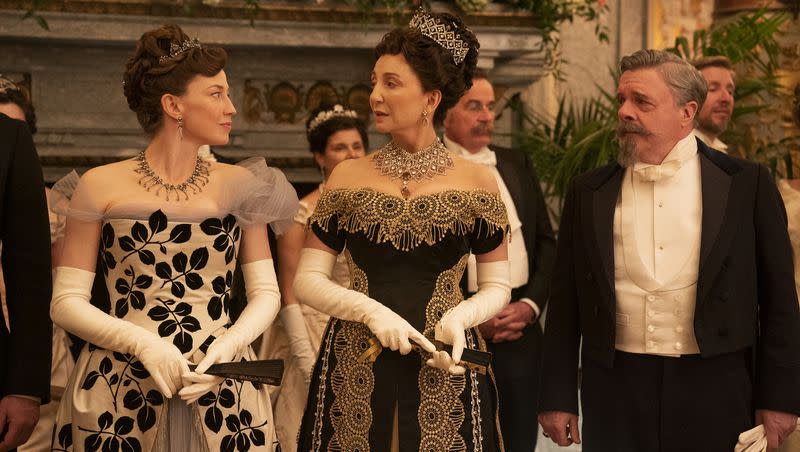
HBO Max’s “The Gilded Age” Season 1 followed the highs and lows, affluence and melodrama, of the real-life Gilded Age in New York City. The show is full of historically accurate feuds, classism, costumes and real-life figures.
Fans might be interested to learn that “The Gilded Age” Season 1 isn’t all fiction. In fact, it follows and chronicles real-life, historic figures — and their drama. As fans eagerly await “The Gilded Age” Season 2 — which is officially coming out this fall — let’s dive into the real people depicted in the dramatic period piece.
Related
Who are ‘The Gilded Age’ characters based on?
HBO Max’s “The Gilded Age” is fictional, but it’s also deeply rooted in historical events. 1880s New York City was filled with opulence and classism, with an elite group of wealthy, prominent families ruling New York’s upper society.
So while the plot in “The Gilded Age” Season 1 is fiction, it’s heavily based on true events. Some characters are only based on real-life figures — such as Bertha Russell — but others are based on real people.
Were the Russells a real family?
The Russells are a fictional family. But the Russells are based on the real-life Vanderbilts, who were considered new money to the older, more established New York families. According to ScreenRant, the Vanderbilts acquired their wealth in shipping and railroads, much like the Russells.
When does ‘The Gilded Age’ Season 2 come out?
Good news, “The Gilded Age” fans — HBO has officially set a premiere date. “The Gilded Age” Season 2 comes out Oct. 29, according to Vanity Fair.
While the newest season promises the typical drama and opulence, it’ll reportedly revolve around two competing opera houses — the Academy of Music and the Metropolitan Opera — and the old-money, new-money feud that’ll come along with it.
The real-life people in ‘The Gilded Age’
“The Gilded Age” features many characters that actually existed at the time. While you might have heard of some — the Astors, for example — there are a few that might surprise you.
Caroline Schermerhorn Astor
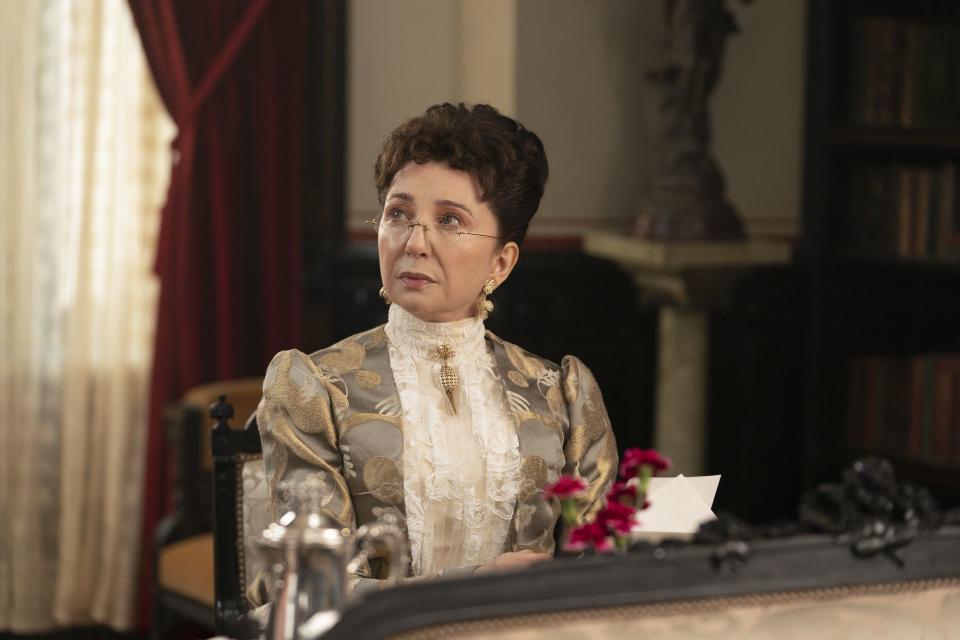
In “The Gilded Age” Season 1, Caroline Astor reigns over New York society and is hesitant to include the Russells into the fold, because they’re “new money.” Not only was Astor real, but the feud between her and Bertha Russell is based on real-life events.
Related
Astor was “was the daughter of a wealthy merchant,” per Britannica, who married William Astor in 1853. Caroline Astor was a prominent tastemaker in New York society, and cultivated a list of the 400 most relevant and fashionable New Yorkers with her friend Ward McAllister. The 400 were those who had Astor’s calling card and who attended her famous parties, as the Deseret News previously reported
Astor famously disliked the Vanderbilt family due to their reputation as new money, per Vogue. This is likely the inspiration for Russell and Astor’s friction in “The Gilded Age” Season 1. Eventually, Astor accepted the Vanderbilts into the fold.
Ward McAllister
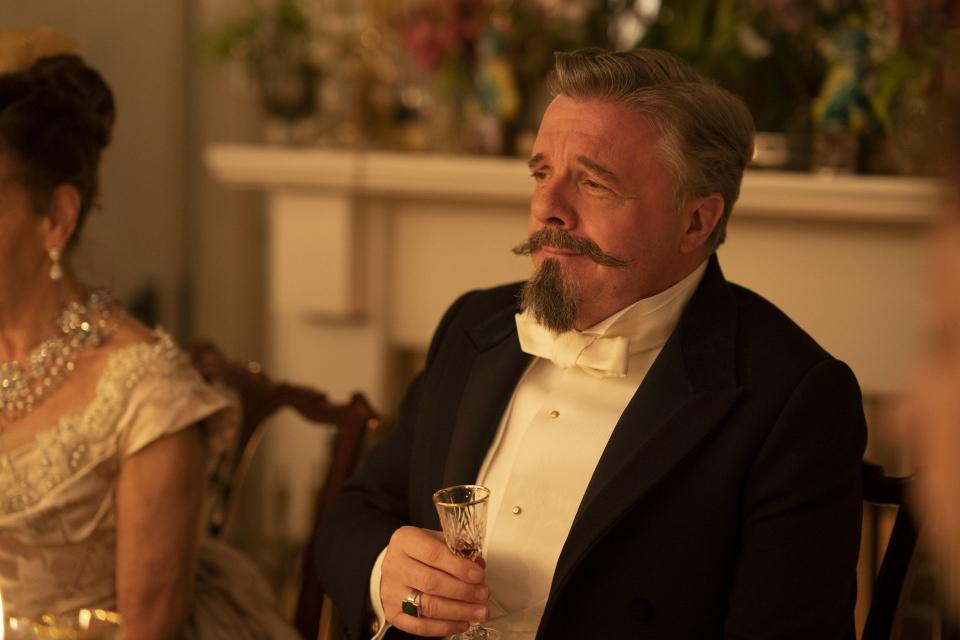
In “The Gilded Age,” Russell seeks out the approval of Ward McAllister in order to make her way into the elite of New York’s society. In real life, McAllister was an actual tastemaker and helped establish the 400 with Caroline Astor.
Per Britannica, McAllister was a lawyer from Savannah, Georgia. After making a fortune on his law firm by 1852, he retired and “devoted himself to social life.” After a trip with his wife to Europe, McAllister found himself “smitten with the ‘Society’ he found there,” per Slate. He moved to New York City and played a heavy hand in establishing upper New York society. However, per Britannica, he spent most of his time in Newport — as he does in “The Gilded Age” Season 1.
McAllister believed that fashionable people, and the wealthy, were job makers, writing that they “cause the expenditure of money and its distribution.” He wrote a memoir about society and his life, called “Society as I Have Found It,” in 1890. According to Slate, McAllister’s memoir created quite a stir in his social circle and was the downfall of his influence.
Mamie Fish
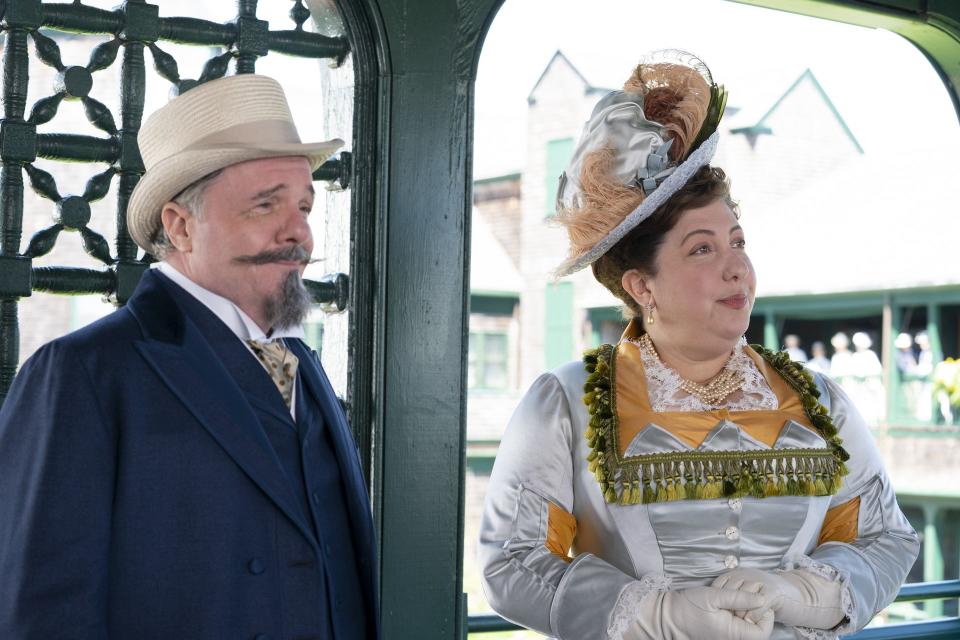
In “The Gilded Age,” Russell advises her son, Larry, to get close to socialite and hostess Mamie Fish — she’s the center of Newport society and is known for her lavish parties. The real-life Fish was the same.
Fish was notorious for her “quick wit and outrageous parties in New York and Newport,” per Vogue — fans of “The Gilded Age” most likely remember her for her doll tea party.
According to The Newport Daily News, “A symbol of ultrafashionable society, at the height of her reign Mamie was a favorite topic for the newspapers, whether it was a bit of speculation about the plans for her latest party, a description of an outfit, or a rumor regarding her most recent social squabble.”
After Caroline Astor’s death, Fish, along with Alva Vanderbilt, took over the reigns as the leaders of New York Society, per Vogue.
‘The Gilded Age’ characters based on real-life people
While “The Gilded Age” portrays plenty of real-life people, there are a few characters who, while not actual real-life people, are based on real, prominent figures during the Gilded Age.
Bertha Russell based on Alva Vanderbilt
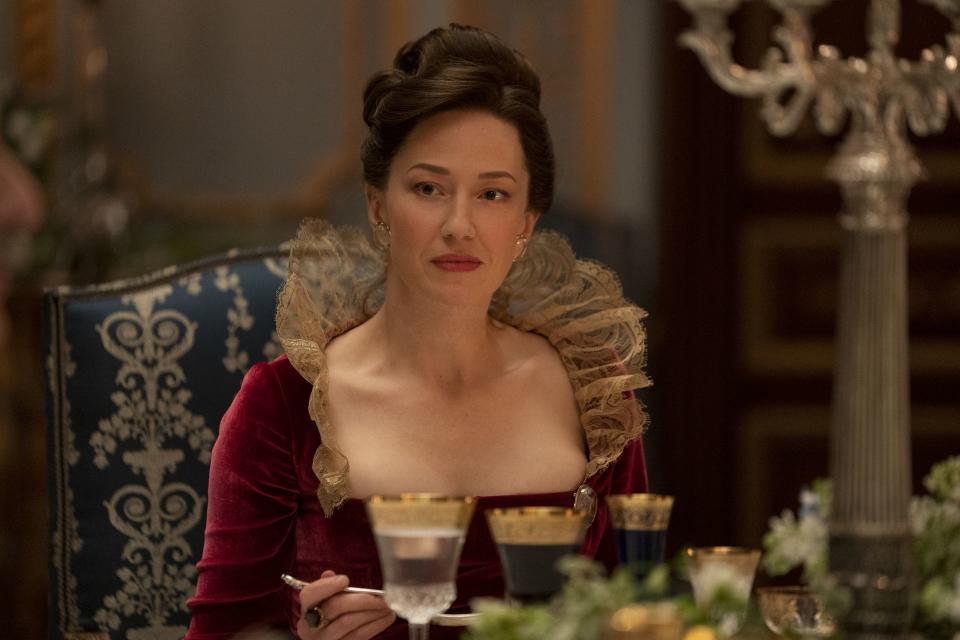
According to Vogue, the ambitious and wealthy Bertha Russell is heavily based on Alva Vanderbilt. So much so that “The Gilded Age” creator Julian Fellowes said, “Bertha is completely Alva,” per Rhode Island Monthly.
Per Britannica, Alva Vanderbilt married William K. Vanderbilt in 1875 and, at the time, the Vanderbilts were one of the wealthiest families in the world. Despite this, Vanderbilt lacked the coveted 400 status bequeathed by the Astors because they were new money.
Vanderbilt did everything in her power to join the 400, including hiring famous architect Richard M. Hunt to design their $3 million mansion on Fifth Avenue. In 1883, Vanderbilt planned what is perhaps the party of the century — an Olympian masquerade ball with 1,200 invited.
According to Brittanica, Astor acquiesced and asked Vanderbilt to put her daughter, Carolina Astor, on the invite list. Vanderbilt agreed, and her spot amongst the 400 was finally secured, as the Deseret News previously reported.
Gladys Russell based on Consuelo Vanderbilt
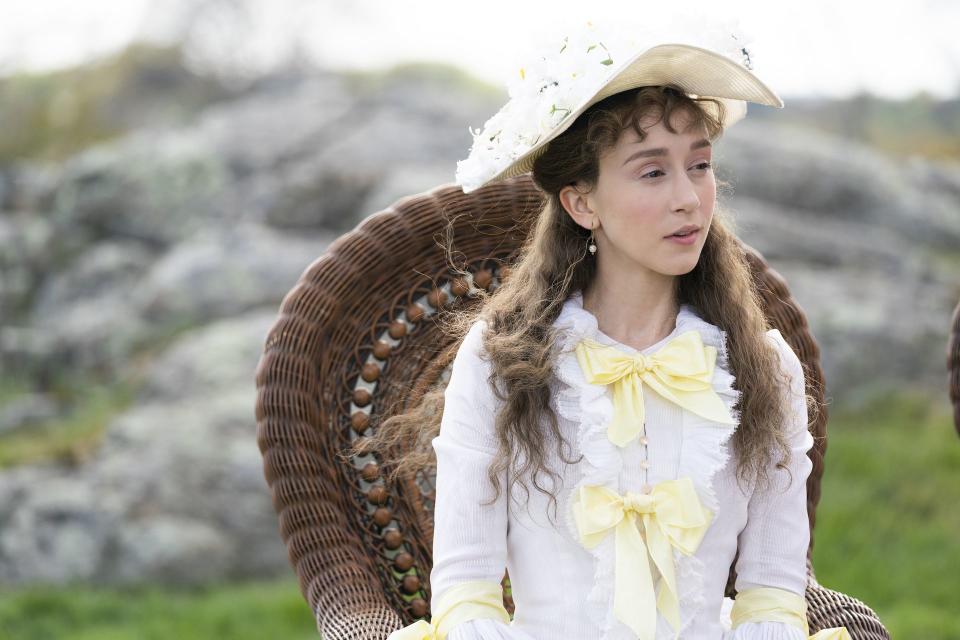
If Bertha Russell is based on Alva Vanderbilt, then Russell’s daughter is certainly based on the beautiful socialite Consuelo Vanderbilt, daughter of the Vanderbilt family. Much like in “The Gilded Age” Season 1, the Vanderbilt daughter was ready to marry for love — but her mother had her sights set on “a stratospheric social match,” per Vogue.
Eventually, Vanderbilt was married to “a cash-poor but pedigree-rich Englishman,” the ninth Duke of Marlborough, according to NPR. The Vanderbilts paid the duke a $2.5 million dowry to marry their daughter, per Vogue, and the unhappy bride reportedly “cried behind her veil” at her wedding.
Her marriage to the duke proved to be loveless — they eventually divorced and Vanderbilt dedicated her life to political activism, per NPR.
Sylvia Chamberlain based on Arabella Huntington
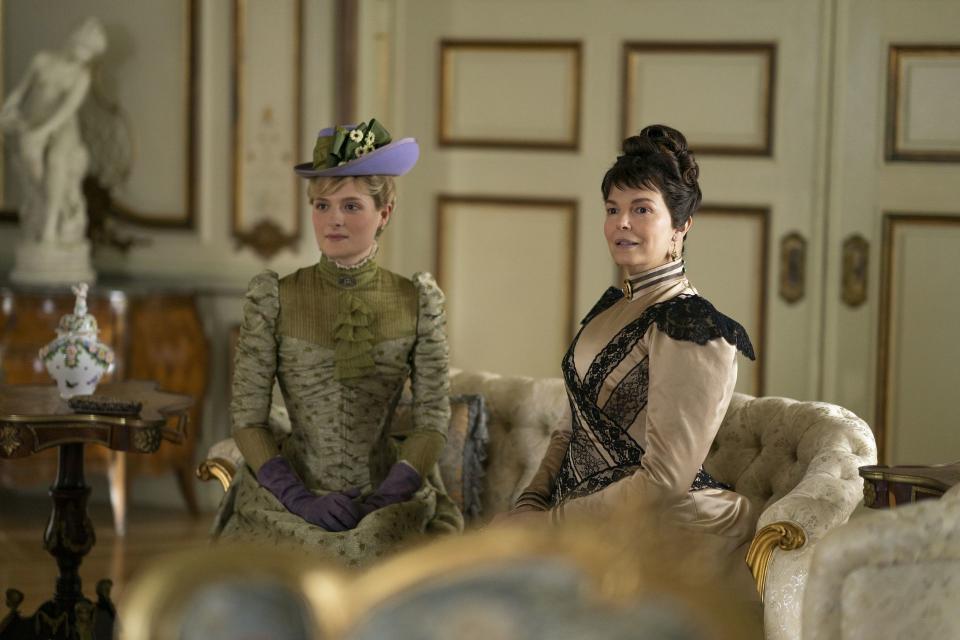
By all accounts, the wealthy widow and social pariah Sylvia Chamberlain is heavily based on Arabella Huntington, according to Vogue. Much like Sylvia in “The Gilded Age” Season 1, Huntington was in a controversial marriage: she married Collis Huntington, rich American industrialist, only nine months after his first wife died.
And, much like in “The Gilded Age,” Huntington was a social pariah. According to the Los Angeles Times, “The newlyweds moved to Fifth Avenue, but even that address could not overcome Arabella’s mysterious past and Huntington’s ruthless dealings — notable even in that rapacious age. The Astors and Vanderbilts barred them from New York society.”
Also similarly to Sylvia, Huntington had a child out of wedlock — and the identity of the father is still up for debate.
